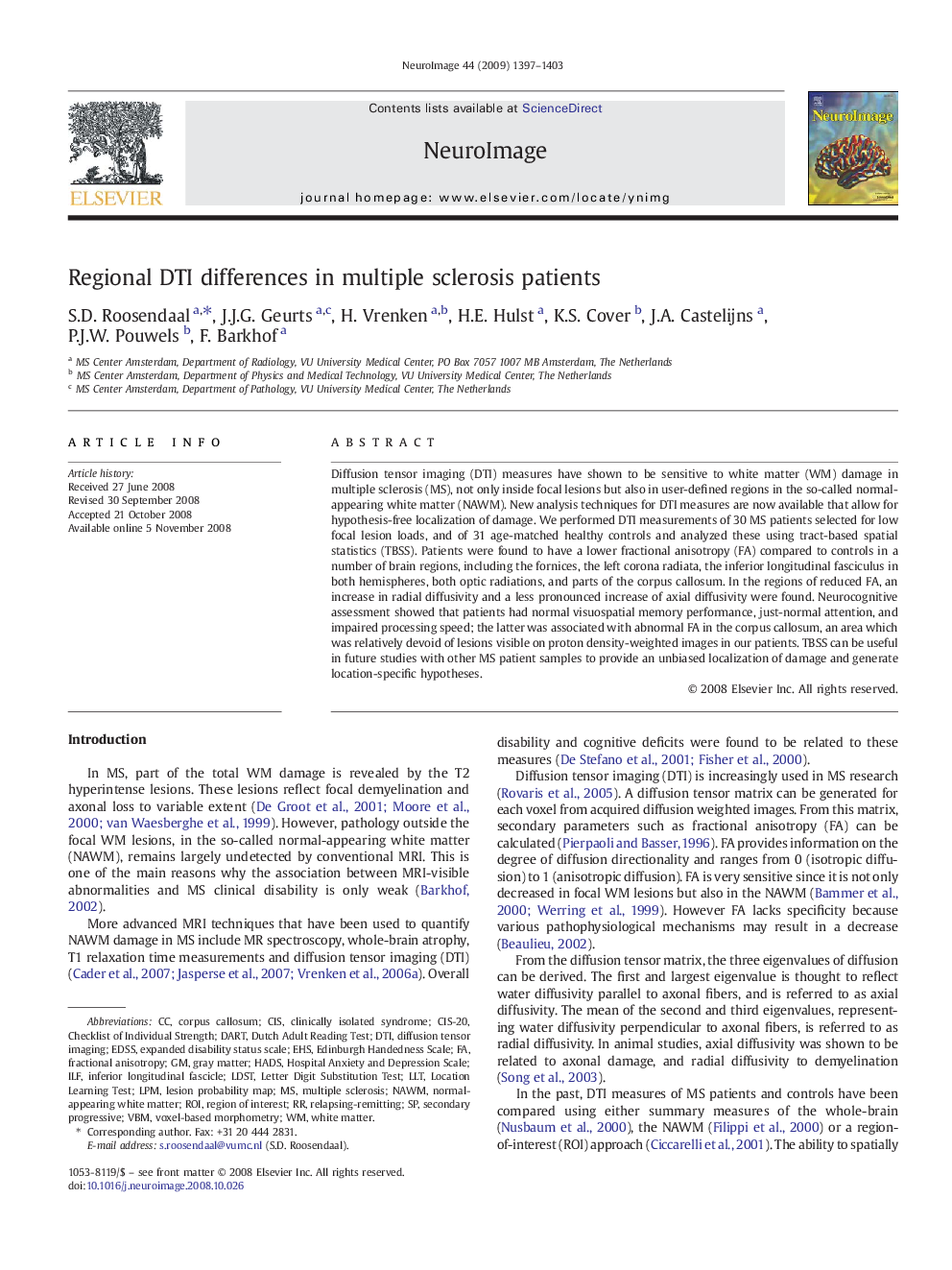| Article ID | Journal | Published Year | Pages | File Type |
|---|---|---|---|---|
| 3072467 | NeuroImage | 2009 | 7 Pages |
Diffusion tensor imaging (DTI) measures have shown to be sensitive to white matter (WM) damage in multiple sclerosis (MS), not only inside focal lesions but also in user-defined regions in the so-called normal-appearing white matter (NAWM). New analysis techniques for DTI measures are now available that allow for hypothesis-free localization of damage. We performed DTI measurements of 30 MS patients selected for low focal lesion loads, and of 31 age-matched healthy controls and analyzed these using tract-based spatial statistics (TBSS). Patients were found to have a lower fractional anisotropy (FA) compared to controls in a number of brain regions, including the fornices, the left corona radiata, the inferior longitudinal fasciculus in both hemispheres, both optic radiations, and parts of the corpus callosum. In the regions of reduced FA, an increase in radial diffusivity and a less pronounced increase of axial diffusivity were found. Neurocognitive assessment showed that patients had normal visuospatial memory performance, just-normal attention, and impaired processing speed; the latter was associated with abnormal FA in the corpus callosum, an area which was relatively devoid of lesions visible on proton density-weighted images in our patients. TBSS can be useful in future studies with other MS patient samples to provide an unbiased localization of damage and generate location-specific hypotheses.
